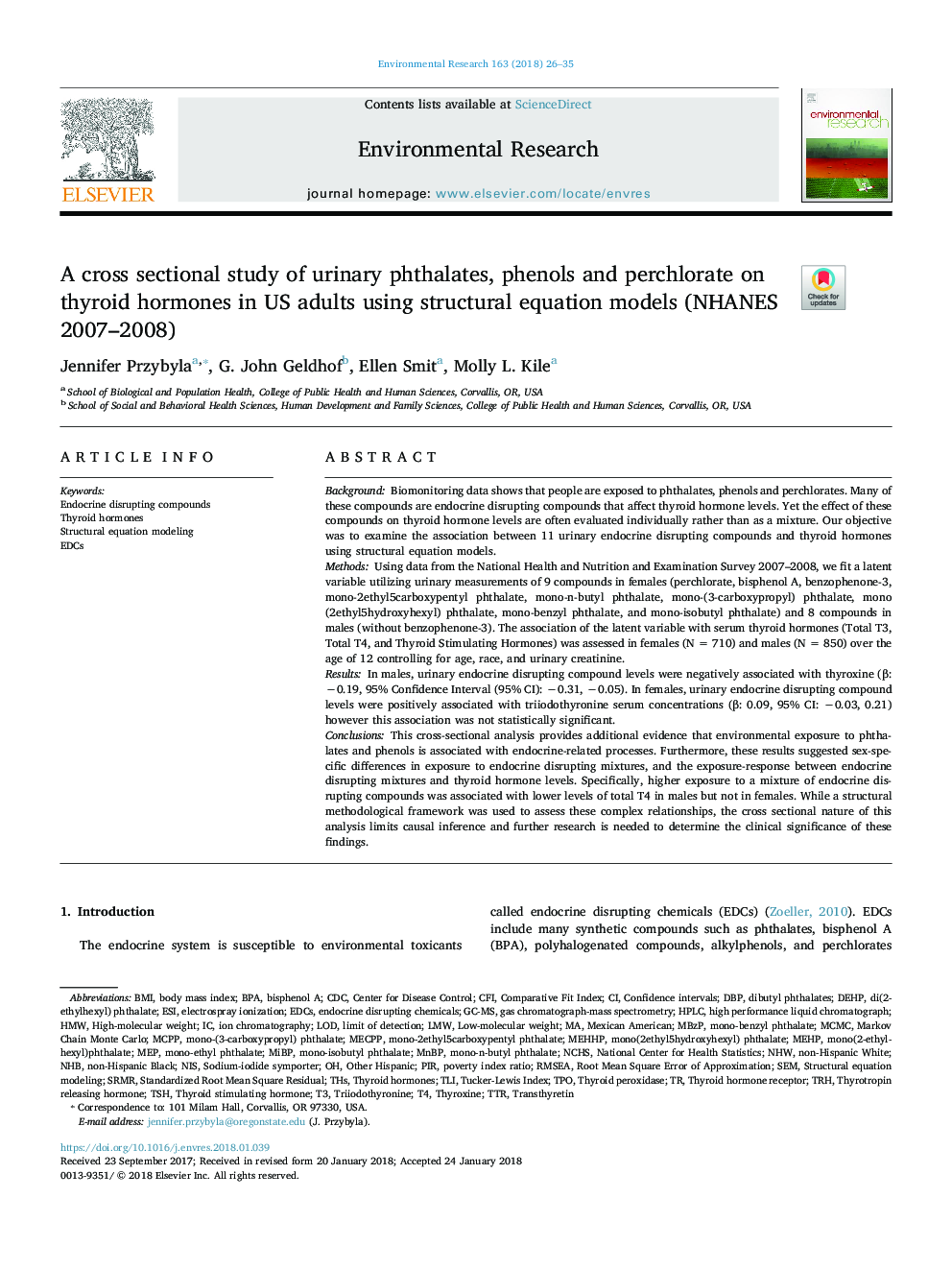| Article ID | Journal | Published Year | Pages | File Type |
|---|---|---|---|---|
| 8869073 | Environmental Research | 2018 | 10 Pages |
Abstract
This cross-sectional analysis provides additional evidence that environmental exposure to phthalates and phenols is associated with endocrine-related processes. Furthermore, these results suggested sex-specific differences in exposure to endocrine disrupting mixtures, and the exposure-response between endocrine disrupting mixtures and thyroid hormone levels. Specifically, higher exposure to a mixture of endocrine disrupting compounds was associated with lower levels of total T4 in males but not in females. While a structural methodological framework was used to assess these complex relationships, the cross sectional nature of this analysis limits causal inference and further research is needed to determine the clinical significance of these findings.
Keywords
CDCmono-n-butyl phthalateMnBPMiBPMBzPDEHPHMWNHBCFILMWNCHSMEPmCPPDBPNHWMEHPgas chromatograph-mass spectrometryMCMCESIMECPPMEHHPmono-(3-carboxypropyl) phthalateBPAGC-MSEDCsNiSMexican AmericanMono-benzyl phthalateBisphenol APirLOD یا Limit of detectiondi(2-ethylhexyl) phthalateMarkov chain Monte Carlosodium-iodide symporterNon-Hispanic whitebody mass indexBMIComparative Fit IndexNon-Hispanic blackconfidence intervalsmono-ethyl phthalatelimit of detectionNational Center for Health StatisticsCenter for Disease ControlEndocrine Disrupting ChemicalsMono(2-ethylhexyl)phthalatemono-isobutyl phthalatehigh-molecular weightLow-molecular weighthigh performance liquid chromatographHPLCIon chromatographyelectrospray ionization
Related Topics
Life Sciences
Environmental Science
Health, Toxicology and Mutagenesis
Authors
Jennifer Przybyla, G. John Geldhof, Ellen Smit, Molly L. Kile,
